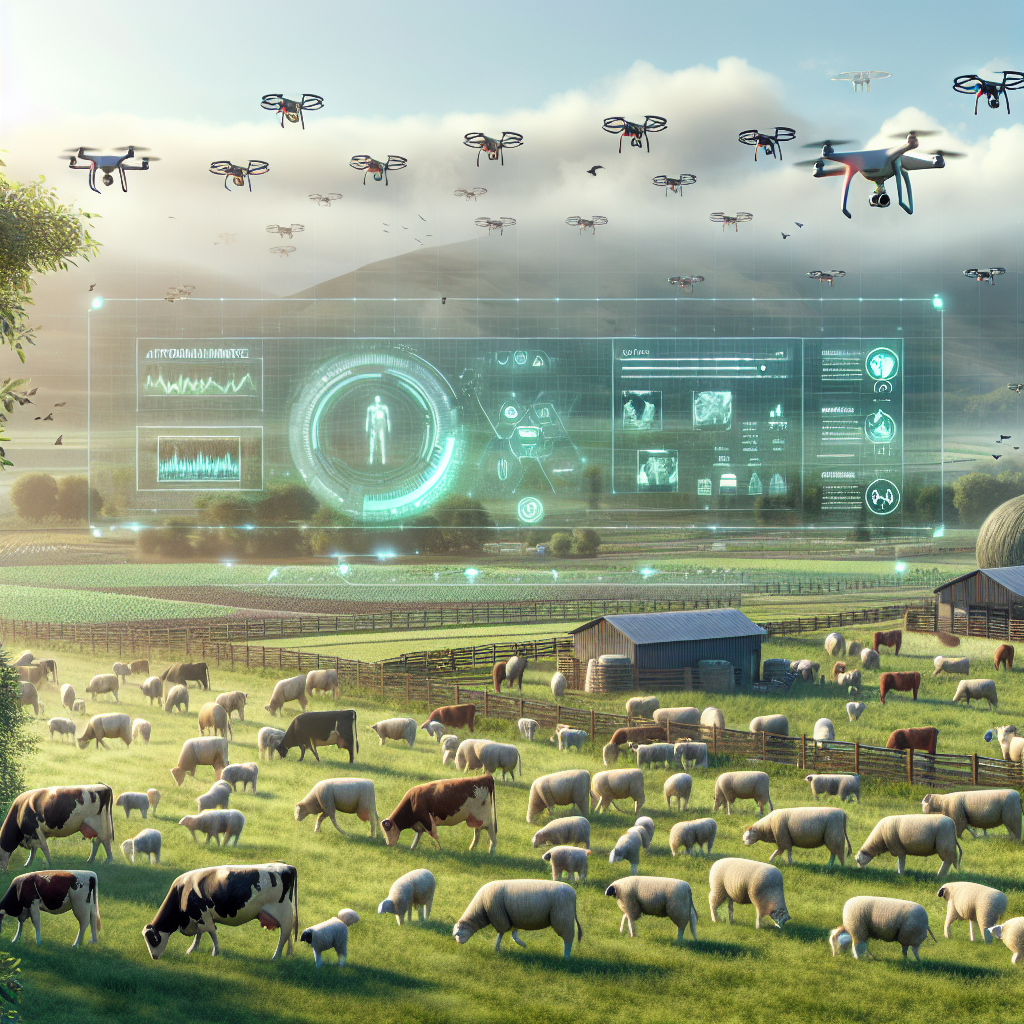In recent years, the livestock industry has seen a rapid increase in the adoption of technology to improve efficiency and productivity. One area where technology is making a significant impact is in precision livestock health monitoring and disease management. By leveraging artificial intelligence (AI) tools, farmers and ranchers can now monitor the health of their animals in real-time, detect signs of disease early, and take proactive measures to prevent outbreaks. This not only improves animal welfare but also helps to reduce the use of antibiotics and other medications, leading to healthier animals and a more sustainable industry.
AI-powered monitoring systems can track a wide range of data points, including temperature, heart rate, respiratory rate, activity level, and even vocalizations. By analyzing this data in real-time, farmers can quickly identify any deviations from normal behavior or vital signs that may indicate a health issue. For example, an increase in body temperature could signal an infection, while a decrease in activity level could indicate pain or discomfort. By catching these signs early, farmers can take action to prevent the spread of disease and minimize the impact on their livestock.
One of the key benefits of using AI for livestock health monitoring is the ability to monitor large numbers of animals simultaneously. Traditional methods of monitoring, such as visual inspections or manual temperature checks, are time-consuming and often miss early warning signs of illness. AI systems, on the other hand, can analyze data from hundreds or even thousands of animals at once, allowing farmers to quickly identify and respond to health issues before they escalate.
In addition to real-time monitoring, AI can also be used to predict and prevent disease outbreaks. By analyzing historical data and trends, AI algorithms can identify patterns that may indicate an increased risk of disease in a particular herd or area. This information can help farmers take proactive measures, such as adjusting feed rations, increasing biosecurity measures, or implementing vaccination programs, to prevent the spread of disease before it occurs.
Another advantage of AI-powered livestock health monitoring is the ability to tailor treatment plans to individual animals. By analyzing data on each animal’s health history, genetics, and environmental factors, AI systems can recommend personalized treatment plans that are more effective and efficient than one-size-fits-all approaches. This can help to reduce the use of antibiotics and other medications, leading to healthier animals and lower healthcare costs for farmers.
Overall, leveraging AI for precision livestock health monitoring and disease management offers numerous benefits for both farmers and animals. By providing real-time monitoring, early detection of health issues, and personalized treatment recommendations, AI systems can help to improve animal welfare, reduce the use of antibiotics, and increase productivity in the livestock industry.
FAQs:
Q: How does AI-powered livestock health monitoring work?
A: AI-powered livestock health monitoring systems use sensors to collect data on various vital signs and behaviors of animals, such as temperature, heart rate, activity level, and vocalizations. This data is then analyzed by AI algorithms in real-time to identify any deviations from normal patterns that may indicate a health issue.
Q: What are the benefits of using AI for livestock health monitoring?
A: Some of the key benefits of using AI for livestock health monitoring include real-time monitoring of large numbers of animals, early detection of health issues, personalized treatment recommendations, and the ability to predict and prevent disease outbreaks.
Q: How can AI help to reduce the use of antibiotics in livestock farming?
A: By providing early detection of health issues and personalized treatment recommendations, AI systems can help farmers to reduce the use of antibiotics and other medications in their livestock. This can lead to healthier animals, lower healthcare costs, and a more sustainable industry.
Q: Are there any drawbacks to using AI for livestock health monitoring?
A: While AI-powered livestock health monitoring offers numerous benefits, there are some potential drawbacks to consider, such as the initial cost of implementing the technology, the need for specialized training to use and interpret the data, and concerns about data privacy and security.
Q: What are some examples of AI-powered livestock health monitoring systems?
A: Some examples of AI-powered livestock health monitoring systems include wearable sensors that track vital signs and behaviors, remote monitoring systems that use cameras and sensors to track animal movements, and cloud-based platforms that analyze data from multiple sources to provide real-time insights into animal health.

